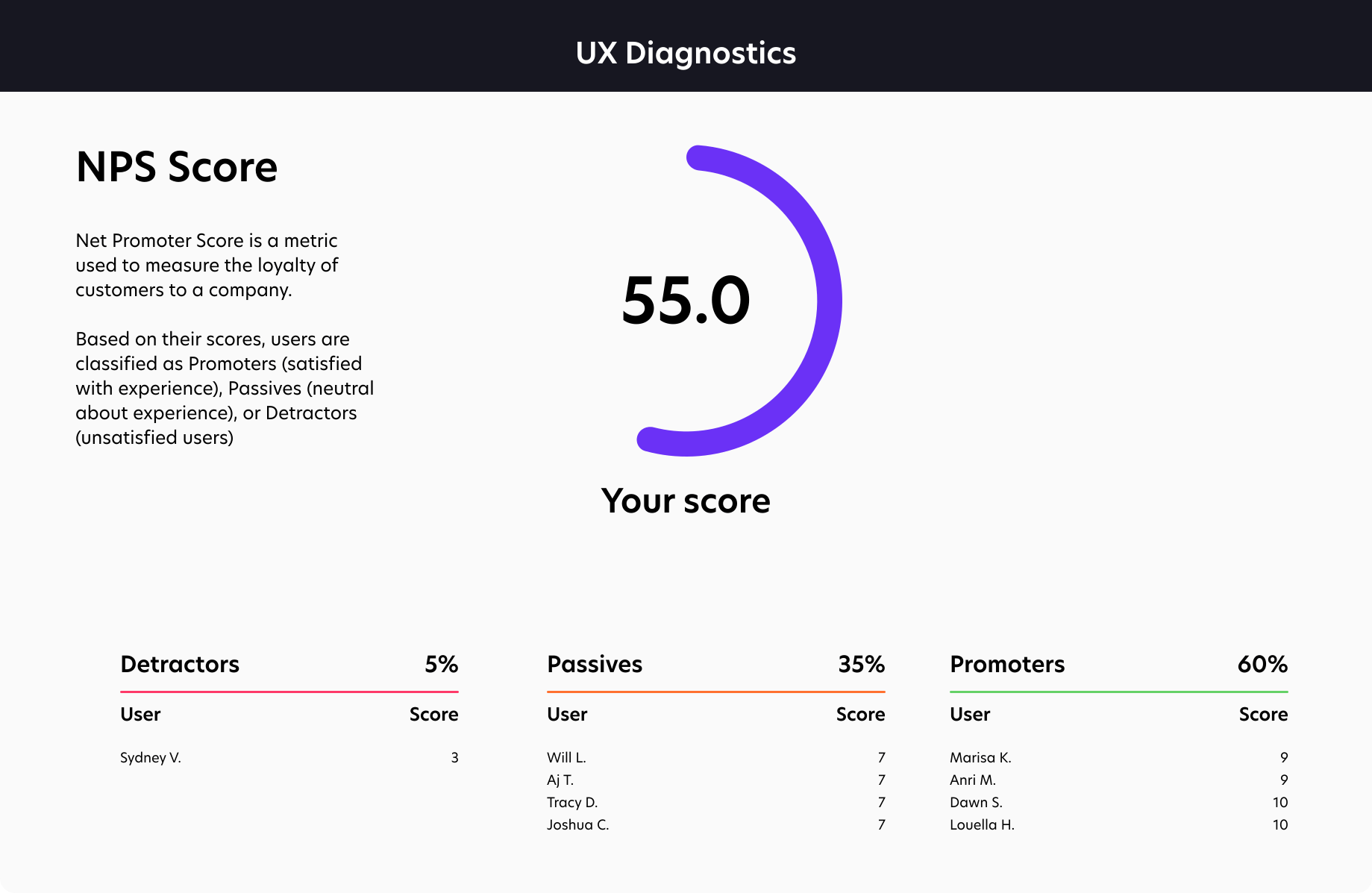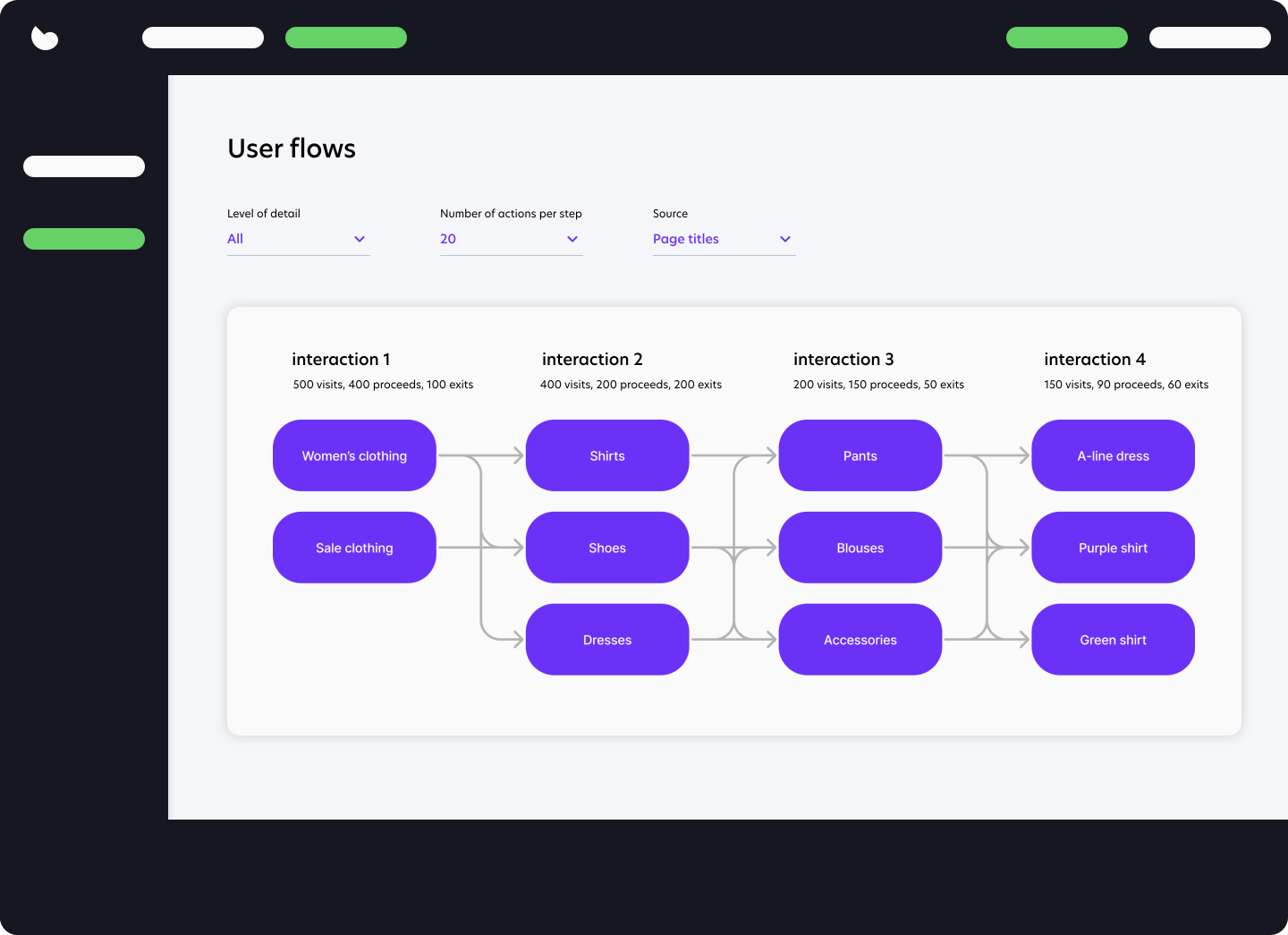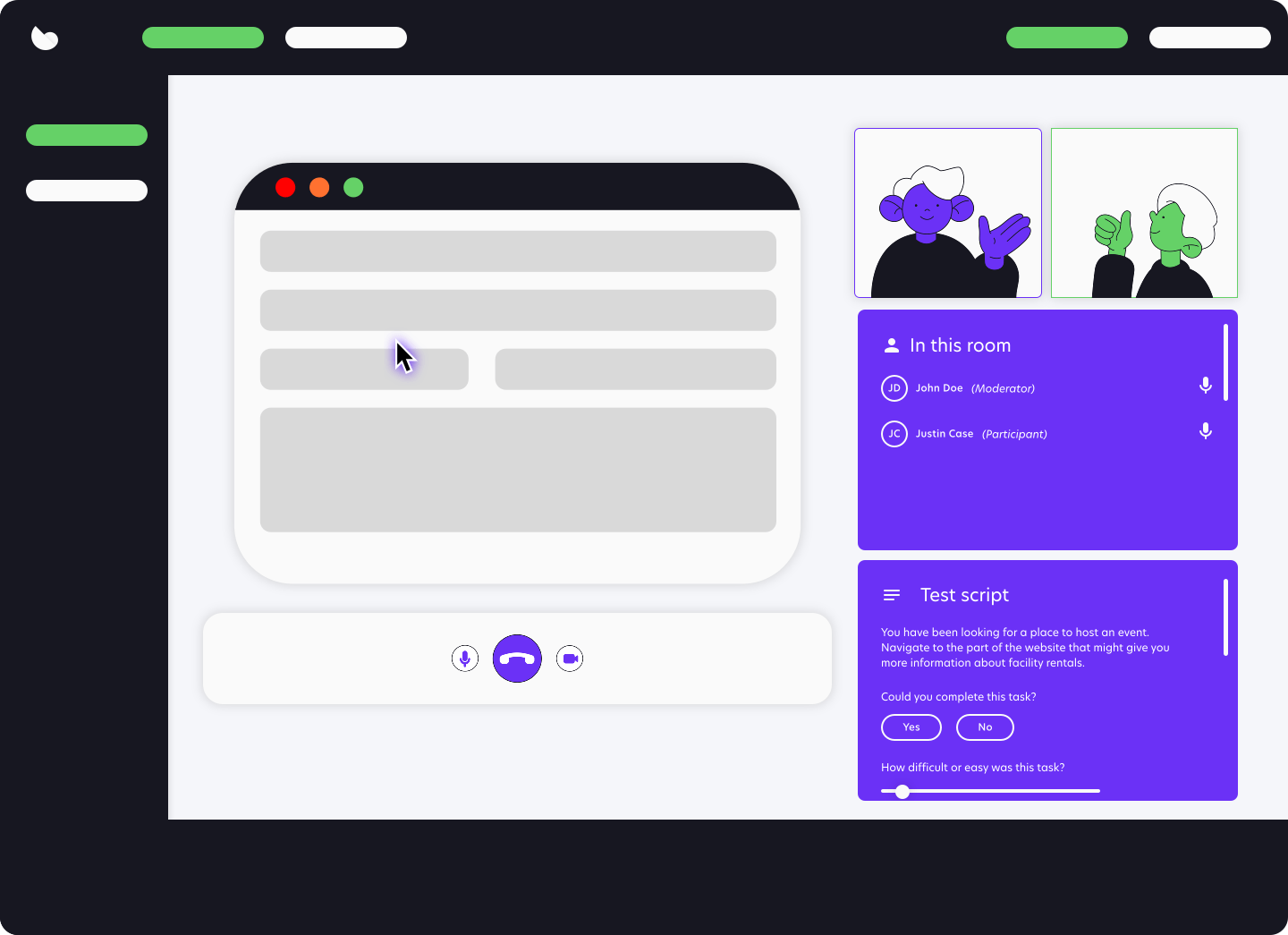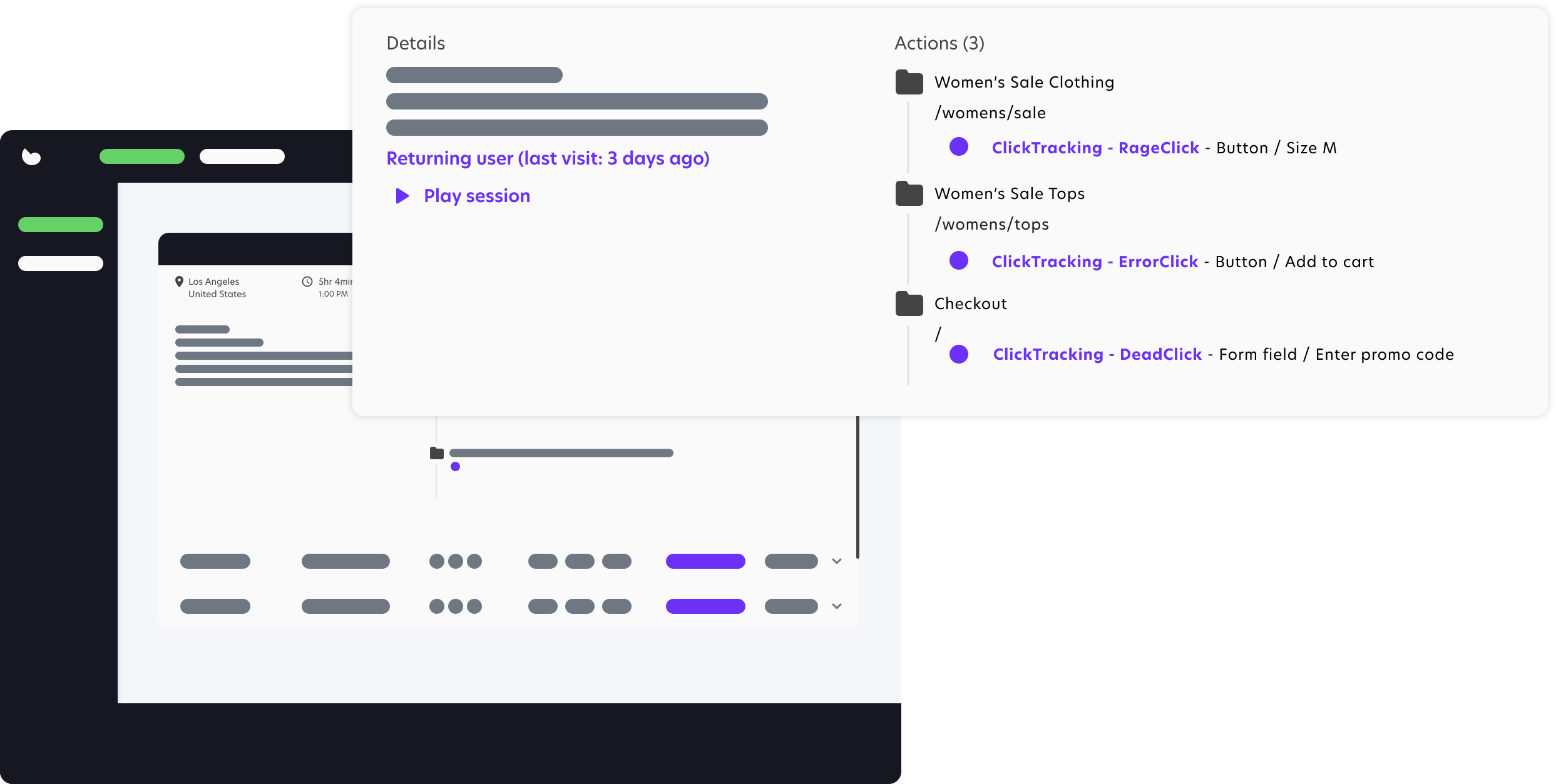The gap between yesterday’s and today’s audience is huge, and it mostly comes down to how much more today’s customers know – how much more information is right at their fingertips. So for all of us trying to improve our digital products, services, and offerings, the challenge has become getting to know our audience and shifting our message to match.
That’s why it’s important to know what makes your customers tick, what motivates them to make a decision, and what you can do to harness that information. This is where customer analytics techniques come in. Knowledge is indeed power, and if you want more of it, read on below.
What are customer analytics techniques?
Before getting into the details of different customer analytics techniques, let’s briefly define “customer analytics” itself.
Customer analytics refers to the systematic process of collecting customer data from various digital platforms, and analyzing the patterns, trends, clusters, and behavioral data to anticipate each customers’ next move.
By employing customer analytics techniques, you can get better acquainted with both existing and potential customers, and thereby craft more effective product and marketing strategies, tuning your products and services for a better digital experience for your customers.
The main goal of any customer analytics technique is to discern which customers are engaging with your business in what ways, and what stage of the customer journey they are at. The better you understand your customers’ buying behavior and lifestyle choices, the better you will become at presenting well-tailored offers and flows. Moreover, you can segment your audience into distinct groups by analyzing their behaviors, allowing you to target specific segments and identify the user journeys of different customer personas.
With customer analytics data, you can improve your conversions significantly. In fact, McKinsey reports that businesses using customer analytics are 2.6 times more likely to have a higher ROI and are 3 times more likely to generate higher revenues than competitors.
Start collecting customer analytics data today:
The 4 customer analytics approaches
Customer analytics is a powerful tool for businesses to understand their customer’s needs, gain insights into their journey, and design products and services tailored to individual needs.
There are 4 main approaches to customer analytics, each of which aims to answer different questions about the customer.
These 4 approaches are: descriptive analytics, diagnostic analytics, predictive analytics, and prescriptive analytics. Understanding each approach can help businesses learn about their customers’ patterns and prepare to face the upcoming challenges in the market.

1. Descriptive analytics
Descriptive analytics is the most fundamental of customer analytics techniques. Essentially, it focuses on answering the question: “What happened?” In other words, it’s about gathering and interpreting historical data to reveal patterns and trends, and tell the story of customers’ relations and interactions with the brand til now.
This approach relies on comprehensively knowing the customer’s “past” in relation to the brand: particularly, what they did on a platform, and how they engaged with it.
By employing descriptive analysis, businesses can interpret historical customer data to determine what worked and what didn’t. Moreover, this allows businesses to prepare better strategies for the future.
For example: 25% of people added an item to the cart, but didn’t actually complete the purchase.
You can start utilizing a descriptive analytics approach by collecting behavioral data (user actions such as viewing a page, signing up, replying to an email, etc.) Behavioral datapoints like these comprise 3 core aspects: Who (a unique user ID), What (type of action taken), and When (timestamp of the action). Any and all of these aspects can be aggregated and generalized to learn more about the historical patterns of different groups of users or types of actions.
Gathering customer data can help companies implement not just descriptive analytics techniques, but all kinds of customer analytics techniques for better engaging with customers.

2. Diagnostic analytics
Diagnostic analytics is the process that helps brands understand the “why” of their customers’ actions and choices. This approach helps you to explain the basis of many different customer behaviors.
For example: 15% of people didn’t adopt our newly-launched feature — why?
Diagnostic analysis produces valuable insights surrounding the questions you may have about customer experiences on your digital platforms.
What do diagnostic analytics techniques look like in practice? Mainly, it involves strategies for identifying correlations in the data, and then if possible, establishing causation.
Correlation analysis can take different forms depending on the kind of dataset you’re working with, but ultimately all it means is finding a unique pattern in which 2 variables or patterns co-occur at a higher rate than expected. For example, you might notice that there is a peak in web traffic every Wednesday, and that Wednesday is also the day that new products are released on your site.
This would be a correlation: the 2 patterns occur together, moreso than other combinations. It’s important to remember, however, that correlation is NOT the same as causation (an adage you may have heard before!) Imagine that after you’ve identified this correlation, you discover that the main source of the traffic peak is from Brazilian users, but the new product releases only happen in Canada. This would imply that the releases are in fact not the cause of the spike, and there must be something else happening on Wednesdays that explains it.
Diagnostic analytics techniques can help you explain all sorts of trends or problems that arise within your customer analytics practice – a decrease in traffic, a drop in sales, a surge in reporting of a specific bug. Having a skillset in data analysis is extremely useful for this kind of approach, but even without it you can still find useful insights if you know and understand the principles above.

3. Predictive analytics
With predictive analytics, you can decipher customers’ historical and current data to understand connections between the two, and then project those connections forward to prepare for the future. Using a predictive analytics approach helps you to forecast the direction that future trends will take, or anticipate the return of cyclical buying or behavioral patterns.
For example: the sales of stuffed bunnies will increase by 30% for the month before Easter every year.
Predictive analytics actually does more than what its name suggests. It doesn’t just give you insight to “predict” what will likely happen in the future or the best steps to take going forward. It also helps your company to reduce risk, detect frauds, optimize marketing campaigns, and improve operations overall.
Take the example above. If you know when sales of stuffed bunnies will be most popular, you can increase production of those items plenty of time in advance, and then create marketing campaigns to advertise them and maximize the increase in consumer interest.
Prescriptive analytics techniques don’t have to be focused only on temporal patterns. It can also repurpose the kinds of correlations identified from your diagnostic analytics to maximize on those patterns. For example, if you know that customers who purchase Product X have an increased likelihood to buy Product Y later on, you can create opportunities through your design choices, personalized marketing initiatives, and sales outreaches to sell Product Y to more X purchasers.

4. Prescriptive analytics
Prescriptive analytics offers you suggestions and insights into choosing the best courses of action for addressing customer behavior. It is about how you can influence customer behavior to your benefit.
For example: video ads are known to improve customer engagement by 8%.
Let’s examine a few real-world examples. Let’s say you have an ecommerce business. One prescriptive analytics technique that you would likely benefit from is lead scoring. This process helps you determine how likely any lead is to convert into a paying customer.
Creating a lead scoring model relies on the incorporation of specially chosen pieces of your descriptive analytics data: things like pageviews, site searches, content engagement, email interactions, and more. You’ll also draw on insights from the other customer analytics approaches, to better understand why users take certain actions, and when they might be likely to do so. Then, you can assign values to the different actions a lead has taken, and combine them into a total score.
Speaking of content engagement, predictive analytics can also play a huge role in content curation. This helps you and your content marketing team figure out the best type of content to feature on your website and social media platforms. As you observe which types of content your audience likes to watch and engage with, you can lean more heavily into those content categories.
Take Tiktok, for example. Through prescriptive analytics, you can see how many viewers have finished a video. This is an indication of interest. So look at the video and analyze it from the message, to the music, to the effects. Again, find the formula behind its success, and run with it.
Start applying customer analytics techniques today:
Types of customer analytics
Now that we’ve covered the different approaches to customer analytics techniques, it is crucial to understand the types of customer analytics data, and how you can best take advantage of the data obtained across the customer journey.
With the following 6 types of data, you can tune into the minds of your customer and learn why they do or do not engage with your brand. (Note that there is some overlap between some of the analytical types below).
1. Customer experience analytics
Customer experience (CX) analytics is a type of descriptive analytics that tells you what your customers feel when they engage with your business.
There are a variety of different metrics and datasets you can use to investigate the customer experience. Since understanding the customer experience necessarily requires inputs directly from the customer, most of these are different formats of customer surveys.
One of the most famous is the Net Promoter Score (NPS), which is widely used (but a bit less widely agreed upon). The NPS is a 1-question survey for measuring the likelihood that users would recommend your brand to others, and is generally viewed as a shorthand for broader customer experience quantification.
Other standardized survey models for collecting CX analytics data include the CSAT (Customer Satisfaction Score), the SUPR-Q (Standardized User Experience Percentile Rank Questionnaire), the CES (Customer Effort Score). Besides these standard options, you can of course develop your own surveys to ask any kind of question that best reflects your own customers’ experience of your platform.
Besides customer surveys, there are some customer experience analytics metrics that aren’t reliant on direct responses from customers. For example, collecting datasets of communications submitted by customers to support and customer success personnel can enable useful analyses. You can also measure the “average handle time” (AHT) to see how long customer issues take to be resolved, and observe metrics like churn rate to draw conclusions about customer satisfaction.

2. Customer engagement analytics
Customer engagement analytics help you measure and track customers’ level of engagement with your products and services. Many of the kinds of data that this customer analytics technique entails will come from your web analytics: things like pageviews, time on page, bounce rates, and navigations.
These pieces of data are useful in aggregate, in order to know what features and contents your customers are engaging with; it’s also useful, though, to be able to identify the engagement patterns of individual users. This can be used for things like lead scoring, and also for determining whether different types of users engage with your platform and content in different ways.
By observing customers’ engagement patterns, you can apply the approaches discussed above to improve the quality of that engagement.
3. Customer journey analytics
As the name suggests, customer journey analytics helps you understand the customers’ journey from start to end as they engage with your brand and/or purchase your product (from initial research to actual purchase).
Customer journey analytics can incorporate data points from various channels – primarily your website’s traffic data, but also potentially from your social media profiles, your CRM, and more – to help you understand the journey. For example, your site’s acquisition data will tell you where visitors are coming from before they arrive at your digital platform. Then, data on the most common user pathways (which pages they tend to visit and in what order) will help you to paint the story of how a typical user experiences it. Then, the shopping cart abandonment rate tells you how many customers leave their cart without making final purchases.
Customer journey analytics is a type of predictive analysis that feeds algorithms and helps you identify what will happen in future user sessions (i.e., forecasting). By collecting customer journey analytics data, you can emphasize patterns that yield success the most.

4. Customer loyalty and retention analytics
Customer loyalty and retention analytics help you are centered on tracking and measuring your customers’ loyalty to your brand and products. Like customer experience analytics, it can include metrics based on direct customer feedback, as well as aggregated traffic and behavioral data that allow you to make educated assumptions.
In the former category would be a metric like the NPS (Net Promoter Score) mentioned above. Often used as a microcosm for the entire customer experience, this one-question survey is specifically worded around the respondent’s likelihood to recommend your brand to friends and colleagues; thus, it can be viewed specifically as a customer loyalty measurement too.
Metrics that aren’t derived from surveys include datapoints like percentage or frequency of repeat purchasers, time between repeat purchases, retention rates, recovery rates, usage of referral codes or offers, and more.
5. Customer lifetime analytics
Customer lifetime analytics tells you how much revenue you can generate from a single customer throughout the customer journey. It measures a customer’s contribution to a business over time. The higher the customer lifetime value (CLTV), the higher the revenue your business will generate from the same number of customers.
Using CLTV is a great predictive analytics technique that can be used to project future revenue from your traffic numbers and customer journey and sales funnel trends. Once you’ve identified what this value is, you can also take steps to increase CLTV (and measure whether or not those steps are succeeding).

6. Voice of customer analytics
Lastly, voice of customer analytics tells you about your customers’ opinions, preferences, and expectations of your brand. Practicing voice of customer analytics techniques helps you determine how different customers and customer segments feel about your brand. This in turn will help you to create content and products that meet (and exceed) your customers’ expectations.
Some ways to start practicing voice of customer analytics include listening to customer service calls, sales calls, and support calls to hear what people say regarding your brand; running surveys that allow customers to express their opinions; and observing what customers say about your brand on social media.
Benefits of customer analytics
Having a customer analytics strategy has become crucial for businesses worldwide to succeed in the hyper-competitive, disruption-prone digital economy. By putting customer analytics techniques into practice for your organization, you can take advantage of a litany of benefits.
Increased revenue
The ultimate goal of every business is to drive sales and revenues. Employing customer analytics data and insights can help you reach the right customers for your brand, convert them, and retain them.
Better customer engagement
By presenting more relevant and better targeted offers, you can make customers more likely to engage with your business and spread positive word of mouth. You can identify customer needs and create a better customer experience by analyzing customer data and engagement patterns.
Increased brand awareness
Another goal of every business is to improve its brand awareness and establish a solid brand image in the customers’ minds. With customer analytics techniques, you can create strategies to boost your brand awareness.
Reduced customer acquisition costs
With customer analytics, you can spend more of your time and resources targeting repeat customers and those most likely to convert, leading to lower lead generation and acquisition costs.

Customer analytics tools
Now that we’ve fully discussed what customer analytics is and what different customer analytics techniques look like, how can these techniques be applied? Considering the wide array of metrics, surveys, and methodologies that constitute customer analytics, there are a lot of ways to go about it, and a lot of tools you can use.
A tool like Trymata’s Product Analytics suite empowers you with many of the capabilities covered in this article. Our customer analytics features allow you to collect advanced data that reveals every step of the user journey through your website, from initial visit to final purchase. You can use Trymata Product Analytics to…
- Learn what website flows constitute your customer journey
- Identify opportunities to improve the customer experience, and the quality of their engagement
- Get a view into users’ heads by replaying critical visitor sessions
See the full list of our product analytics features here >
Used in combination with the Trymata Usability Testing suite, you can get an even more advanced understanding of your customer’s mindset, preferences, and opinions. Our usability testing tools will enable you to…
- Talk directly to users in moderated sessions, or hear their thoughts by sending out asynchronous, unmoderated tests
- Collect NPS (Net Promoter Score) data, as well as other psychometric scores that quantify users’ perceptions
- Get real human feedback on landing pages, advertising assets, video materials, new features, conversion flows, and more!
With the combination of Trymata’s research tools, you’ll be able to dive in and start executing on new customer analytics strategies in no time.
Ready to start collecting and analyzing customer analytics data? Get started today!
Conclusion
In a nutshell, customer analytics techniques allow you to fine-tune your products, services, communications, and offerings by analyzing customer data and using that data to create better strategies to engage your customers in the future.
Here’s the tricky part though: the secret isn’t in the data. The secret is in the insights you get from analyzing the data through the techniques described here. You can achieve the success you want by utilizing various customer analytics tools to grow your business significantly, but tools are not the be-all and end-all. Collecting the right data is the first step – then, you need to spend time with it, analyze it, and formulate the best course of action for your business.





